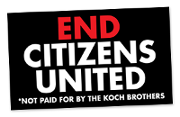Biblio
Filters: First Letter Of Last Name is S [Clear All Filters]
(1984). Scenes from Corporate.
"The men and women who work in middle management and technical jobs in corporations suffer from fear, but not from cowardice. Their ability to endure fear in the struggle to achieve happiness as it has been defined for them proves that they are not cowards. They lack options. They may move from corporation to corporation, but the systems in which they live do not change with the change of employment. As they grow older, even that illusory option disappears. Then they must choose between human alienation and their accustomed standard of living." (p. 284)
(1990). Shared Minds: The New Technologies of Collaboration.
"As William James wrote in Great Men and Their Environment, 'The community stagnates without the impulse of the individual; the impulse dies away without the sympathy of the community.'" (p. xxiii)
(1993). Snow Crash.
Stephenson's dark social satire illustrates what an anti-ROWE future might look like:
"You could try to favor a particular station, try to sit there every day, but it would be noticed. Generally you pick the unoccupied workstation that's closest to the door. That way, whoever comes in earliest sits closest, whoever came in latest is way in the back, for the rest of the day it's obvious at a glance who's on the ball in this office and who is—as they whisper to each other in the bathrooms—having problems.
Not that it's any big secret, who comes in first. When you sign on to a workstation in the morning, it's not like the central computer doesn't notice that fact. The central computer notices just about everything....You're only required to be at your workstation from eight to five, with a half-hour lunch break and two ten-minute coffee breaks, but if you stuck to that schedule it would definitely be noticed..." (p. 282)
"You could try to favor a particular station, try to sit there every day, but it would be noticed. Generally you pick the unoccupied workstation that's closest to the door. That way, whoever comes in earliest sits closest, whoever came in latest is way in the back, for the rest of the day it's obvious at a glance who's on the ball in this office and who is—as they whisper to each other in the bathrooms—having problems.
Not that it's any big secret, who comes in first. When you sign on to a workstation in the morning, it's not like the central computer doesn't notice that fact. The central computer notices just about everything....You're only required to be at your workstation from eight to five, with a half-hour lunch break and two ten-minute coffee breaks, but if you stuck to that schedule it would definitely be noticed..." (p. 282)
(1995). Social Organization of Work.
"Alienation occurs when work provides inadequately for human needs for identity and meaning. Work is alienating to the extent that one does it only from economic necessity, not from its intrinsic pleasures." (p. 56)
"A common response to alienating work is passive resistance through making work into a game (Burawoy, 2000), restricting one`s output (Roy, 1952), or focusing on aspects of work tangential to the main productive activity (Collinson, 2003). For instance, workers often adjust to alienating situations by focusing on interactions with their peers. Managers label such behavioral responses 'poor performance.' However, such behaviors do not necessarily result from incompetence or laziness: rather, they may be straightforward responses to having a job that is tedious, repetitive, or alienating. These responses are difficult to predict from workers' levels of job satisfaction or commitment. Workers who are very committed to their work may be the ones most likely to resist alienating conditions. Those who are less committed may simply exit or grudgingly suffer in silence." (p. 68)
"A common response to alienating work is passive resistance through making work into a game (Burawoy, 2000), restricting one`s output (Roy, 1952), or focusing on aspects of work tangential to the main productive activity (Collinson, 2003). For instance, workers often adjust to alienating situations by focusing on interactions with their peers. Managers label such behavioral responses 'poor performance.' However, such behaviors do not necessarily result from incompetence or laziness: rather, they may be straightforward responses to having a job that is tedious, repetitive, or alienating. These responses are difficult to predict from workers' levels of job satisfaction or commitment. Workers who are very committed to their work may be the ones most likely to resist alienating conditions. Those who are less committed may simply exit or grudgingly suffer in silence." (p. 68)
(2000). Sorting Things Out: Classification and Its Consequences.
"Information technology operates through a series of displacements, from action to representation, from the politics of conflict to the invisible politics of forms and bureaucracy. Decades ago, Max Weber wrote of the iron cage of bureaucracy. Modern humans, he posited, are constrained at every juncture from true freedom of action by a set of rules of our own making. Some of these rules are formal, most are not. Information infrastructure adds another level of depth to the iron cage. In its layers, and in its complex interdependencies, it is a gossamer web with iron at its core." (p. 320)
(2000). Special Edition: Using Samba.
(1981). Stress/Unstress: How You Can Control Stress at Home and on the Job.
"The value of this Self Test for Stress Levels is that if you are getting totals of 300 or more, you are well-advised to take it easy for a year or so with any major life decisions. Not making a decision to change is an acceptable option."
(1988). Take This Job and Love It: How to Change Your Work Without Changing Your Job.
"Burnout is of epidemic proportions because of a delay in companies' responding to the new needs of their workforce, or mismatch between what people want from their job and what the job offers them. Burnout signals not that people are working too hard but that they are not used enough. It recedes when the individual worker is empowered to make the workplace different and when the company makes a commitment to serve its employees." (p. 39)
(2007). True north: discover your authentic leadership.
"When you do not feel in a safe place, you cover your core self to protect it from exposure and harm, and you develop a false self." (p. 77)
(2005). Trump: The Art of the Deal.
Ballantine Books.
"Most people are surprised by the way I work. I play it very loose. I don't carry a briefcase. I try not to schedule too many meetings. I leave my door open. You can't be imaginative or entrepreneurial if you've got too much structure. I prefer to come to work each day and just see what develops."
(1999). Understanding Directory Services.
(1994). The Unwritten Rules of the Game: Master Them, Shatter Them, and Break Through the Barriers to Organizational Change.
"The orthodox wisdom tells us that if we want major and rapid changes in behavior, then the only way to achieve them is for people to feel that their jobs are on the line. So, we are supposed to engineer circumstances that will create a sense of urgency—let us be honest, a sense of fear—within the body of our organizations. And with that stick we can beat our employees into a new mindset.
The established dogma is a lie. Worse, it is a self serving and dangerous lie. It has become a myth that we have all been told for so long by so many people, that we in turn have passed it on to our own colleagues and so reinforced the apparent validity and common sense of the gospel." (p. 137)
The established dogma is a lie. Worse, it is a self serving and dangerous lie. It has become a myth that we have all been told for so long by so many people, that we in turn have passed it on to our own colleagues and so reinforced the apparent validity and common sense of the gospel." (p. 137)
(1996). WebMaster in a Nutshell.
(1994). What You Can Change and What You Can't: The Complete Guide to Successful Self-Improvement.
"It is a disturbing idea that depressed people see reality correctly while nondepressed people distort reality in a self-serving way. As a therapist I was trained to believe that it is my job to help a depressed patient to feel both happier and see the world more clearly. I am supposed to be the agent of happiness as well as the agent of truth. But maybe truth and happiness antagonize each other. Perhaps what we have considered good therapy for a depressed patient merely nurtures benign illusions, making the patient think that her world is better than it actually is." (p. 199)
(1999). When Good Companies Do Bad Things: Responsibility and Risk in an Age of Globalization.
"From our participation in scores of conferences and conversations about corporate social responsibility, we have found that most of us bring heavy baggage to this issue in the form of deep-seated and often unquestioned assumptions." (p. 96)
(2000). Work Rage: Identify the Problems, Implement the Solutions.
"Ocassionally, I encounter and organization that really does practice what it preaches, or 'walks the talk'. But I can say with great certainty that the companies that really do a lot of talking and walking are few and far between. There is a lot of talking but very little walking out there in the big wide world of management.
The potential for rage in these controlling organizations is going to be higher, and for several reasons. When you have a mentoring, coaching, and collaborative management style, employees tend more toward higher productivity, efficiency, and effectiveness, and there is a happier workplace atmosphere. Conversely, when there is a domineering, controlling, or even bullying environment, the employees feel threatened, are less productive, feel highly stressed and are unhappy." (p. 53)
The potential for rage in these controlling organizations is going to be higher, and for several reasons. When you have a mentoring, coaching, and collaborative management style, employees tend more toward higher productivity, efficiency, and effectiveness, and there is a happier workplace atmosphere. Conversely, when there is a domineering, controlling, or even bullying environment, the employees feel threatened, are less productive, feel highly stressed and are unhappy." (p. 53)
(C)2014 CC-BY-NC 3.0, workcreatively.org











 ]
]